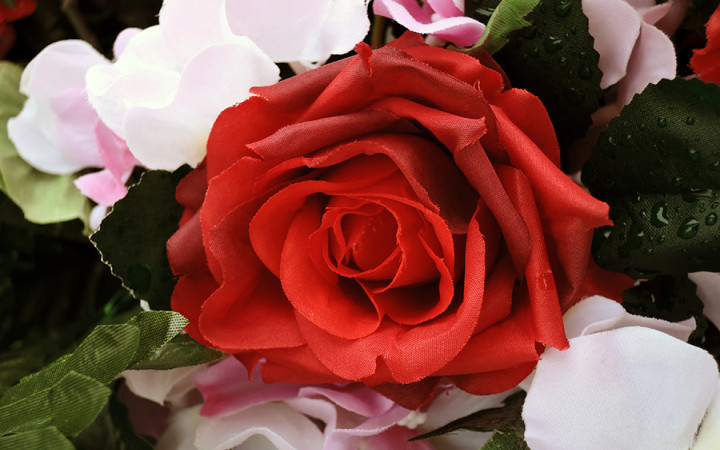Today’s Wonder of the Day was inspired by Ava. Ava Wonders, “How do you make fake plants?” Thanks for WONDERing with us, Ava!
When winter approaches, what do you miss the most? For many people, the lack of flowers in the fields and leaves on the trees makes winter less colorful. They look forward to the promise of new growth in the spring.
If you simply must have floral arrangements around the house year-round, winter becomes the time when you turn to fake plants. Of course, the companies that make these products usually don't refer to them as "fake." Instead, you will probably see them called "artificial" flowers or even "permanent botanicals."
Many of the modern artificial flowers and plants you see today are made of high-quality plastics and fabrics, such as polyester. Many of them look so much like the real thing that you may have to touch and smell them to tell them apart.
Artificial flowers are far from a modern invention, though. Historians believe they were first developed in China over 1,500 years ago. The Chinese made the first artificial flowers out of silk.
Over time, other cultures made their own artificial flowers. For example, the ancient Romans used wax to make intricate, realistic flowers. The ancient Egyptians made artificial wreaths out of animal horns.
Silk flowers spread to Europe in the 12th century, first to Italy and then to France. Eventually, they made their way to England and then on to America. A wide variety of different kinds of materials have been used to make artificial flowers, including satin, velvet, muslin, crepe, gauze, wood, porcelain, palm leaves, and even metal.
Today, artificial plants and flowers are popular all over the world. Bringing the development of artificial flowers full circle, most of them are manufactured in China's Guangdong Province. Two other areas known for their production are Thailand and Honduras.
These areas are known for their artificial flower production because of their cheap labor costs. While artificial flower factories rely upon advanced technology to design realistic looking flowers and plants and modern machines to mass-produce plastic and fabric parts, most of the final assembly of the plants and flowers is still done by hand.
Although many people will always prefer real, fresh flowers and plants, artificial plants and flowers certainly have their advantages. For example, real flowers and plants go in and out of season and require a lot of care.
Artificial plants, on the other hand, look the same year-round and never die. That's why the artificial plant industry is a multi-billion dollar industry that is popular with those who want permanent floral displays, especially for crafts.
Artificial plants allow floral designers to make creations that include a mixture of plants from multiple seasons, a feat that would be nearly impossible to accomplish with real plants. Since they require no sunlight, water, soil, or upkeep, artificial plants are the perfect low-maintenance, long-lasting solution for those who want flowers that look perfect and will stay that way.
For example, artificial flowers have become extremely popular as a part of weddings and other celebrations. There are also potential health benefits to artificial plants. Some real flowers and plants may bother people who have certain allergies, while artificial plants will not.




